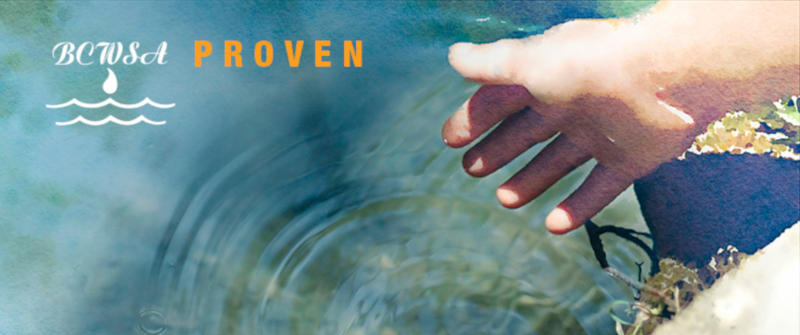Updated: June 1, 2023
Water is our most precious resource. It is vitally important that everyone work together to conserve our water supply. And, of course, saving water saves you money.
Homeowners can significantly decrease the amount of water used each day by following just a few simple “tips” for water conservation.
Follow these tips for conserving water inside:
- Run the dishwasher and clothes washer only when fully loaded.
- Defrost frozen food in the refrigerator or in the microwave instead of running water over it.
- When washing dishes by hand, use two basins – one for washing and one for rinsing rather than let the water run.
- Repair dripping faucets and leaky toilets. Dripping faucets can waste about 2,000 gallons of water each year. Leaky toilets can waste as much as 200 gallons each day.
- Use low-flow faucets, shower heads, reduced-flow toilet flushing equipment, and water saving appliances such as dish and clothes washers.
- Check for leaky toilets. You can test your toilet for a leak by adding food coloring to the tank. If the toilet leaks, color will appear in the toilet bowl within 15 minutes
- You can reduce the amount of water an older toilet uses by placing a half gallon plastic jug in the tank.
- Take a look at your water meter while no water is being used in your house. If it goes up, you obviously have a problem! This can also help you locate underground service leaks.
- Take short showers instead of baths and avoid letting faucets run unnecessarily.
- Keep drinking water in the refrigerator instead of letting the tap run while you wait for cool water.
The following products can assist homeowners in easily reducing their water usage:
Low-Flow Bathroom and Kitchen Faucet Aerators
Faucet use accounts for 15.7% of an average household’s daily water consumption. Installing low-flow faucet aerators on bathroom and kitchen sinks saves water and energy, and lowers utility bills as well, since less hot water used means less water being heated every day.
Aerators are manufactured by various companies, including Kohler, American standard, and Pegasus, among others, and can be purchased for $79-$238.
Showerheads
About 30% of a family’s total indoor water consumption is used in the shower. Although taking shorter showers certainly helps reduce this vast water user, changing just one traditional showerhead for a low-flow showerhead can help save up to 7,300 gallons of water per year. Showerheads are available from Ecoflow, Waterpik, Pfister, Delta Water, and American Standard Royale, among others, and cost anywhere from $31 – $159.
Flapperless Toilet
A flapperless toilet is the only gravity-flush toilet that controls water flow with the use of patented “tipping bucket” technology, eliminating rubber flappers and flexible seals in the toilet tank.
Flapperless toilets are manufactured by Kohler, American Standard, Pegasus, and Rivers Edge, among others, and can be purchased for $70-$343.
But it’s not only inside where we can conserve water.
Follow these tips for conserving water outside:
- Do not over-water your lawn or garden. Over-watering may increase leaching of fertilizers to ground water.
- Don’t water your lawn during the hottest part of the day or when it is windy. This will prevent water loss from evaporation.
- Use fertilizers sparingly and use a broom, rather than a hose, to sweep up drive-ways and sidewalks.
- Never dump anything down storm drains.
- Wash your car with a bucket of soapy water and use a nozzle to stop the flow of water from the hose between rinsing.
- Check for leaks in outdoor faucets, pipes and hoses.
- Cover your spa or pool to reduce evaporation. An average size pool left uncovered can lose as much as 1,000 gallons (3,785 liters) of water per month.
- Consider using a rain barrel to capture water for reuse in landscaping needs. Rain barrels have been around for years, but new ones on the market boast barrels made from 100% recycled materials, no pumps or mechanical devices, built-in overflow ports and screen traps to keep out mosquitoes, and of course child-resistant lid with built-in lock channels. Rain barrels can be purchased from manufacturers such as Fiskars and Emco, among others, can cost anywhere between $89-$139.
- Consider using a soaker hose in your garden. By allowing water to seep directly into the soil, soaker hoses put water exactly where your plants need it—at the root zone. Soaker hoses are manufactured by companies such as Toro and Colorite Swan, among others, and cost between $7 and $32.
